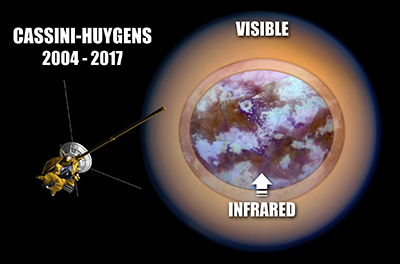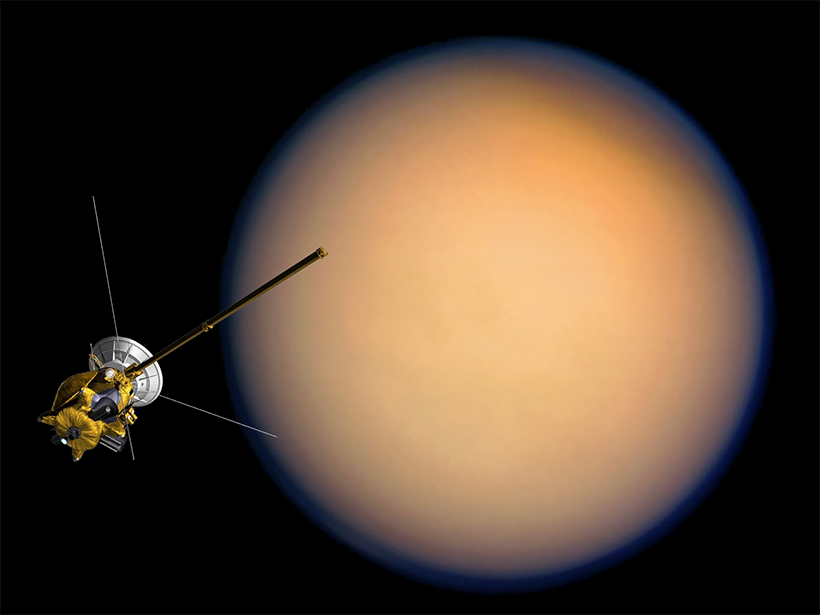Source: Journal of Geophysical Research: Planets
Since 2004, when the instruments aboard NASA’s Cassini spacecraft began peering through Titan’s dense nitrogen- and methane-rich atmosphere, scientists have discovered a surprisingly Earth-like world; stable liquid hydrocarbons evaporate, condense, rain, and flow along its surface in a pattern akin to our planet’s hydrologic cycle. Although observations from Cassini’s Visual and Infrared Mapping Spectrometer (VIMS) have offered tantalizing clues about the moon’s surface composition, which is needed to unravel potential interactions between Titan’s atmosphere, surface, and interior, interpretations depend upon accurately correcting for the interfering effects of the moon’s murky atmosphere.

Now Brossier et al. have developed an advanced processing method to glean more information about Titan’s equatorial belt from the VIMS data. Using their different infrared signatures, the team first remapped the moon’s three primary surficial units: infrared (IR) bright, IR blue, and IR brown. Next, the researchers selected five areas that display transitions between these surficial units and applied models to extract their albedo—a proxy for grain size—and composition on the basis of a range of possible mixtures of water ice and organic aerosols, the two substances believed to be the major components of the moon’s surface. Finally, the scientists correlated the results with morphological terrains identified from Cassini’s radar data.
The results indicate that the IR-bright surficial unit consists of upland hills and plains that are covered with organic material and incised by stream networks. As these areas erode, their debris is transported downstream to IR-blue areas, which appear to be outwash plains that are enriched in large grains of water ice that may result from ice bed erosion following the precipitation of hydrocarbons upstream.
Farthest from the uplands, the IR-brown surficial unit, which comprises 18.6% of Titan’s surface, consists of windblown dunes composed of dust- to sand-sized hydrocarbon grains derived from the highlands.
Because the topographic and geographic distribution of these three units resembles the progression of sediment from mountains to deserts on our planet, these findings suggest that the locations of the infrared-derived surficial units observed in Titan’s equatorial belt may, like their counterparts on Earth, be linked by geological processes. (Journal of Geophysical Research: Planets, https://doi.org/10.1029/2017JE005399, 2018)
—Terri Cook, Freelance Writer
Citation:
Cook, T. (2018), Peering through Titan’s haze to better understand its surface, Eos, 99, https://doi.org/10.1029/2018EO099903. Published on 05 June 2018.
Text © 2018. The authors. CC BY-NC-ND 3.0
Except where otherwise noted, images are subject to copyright. Any reuse without express permission from the copyright owner is prohibited.

